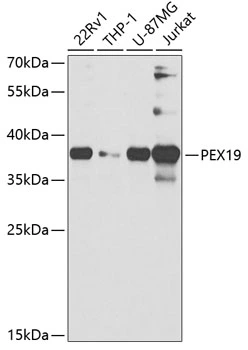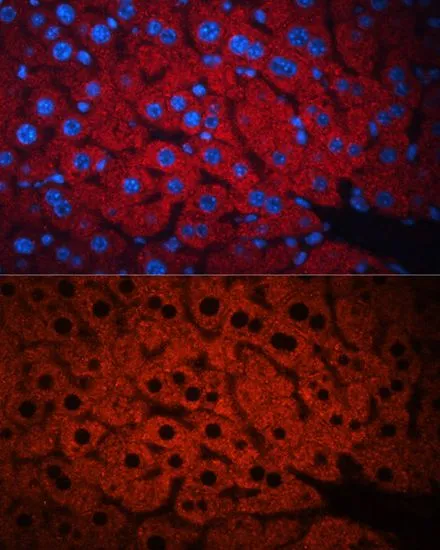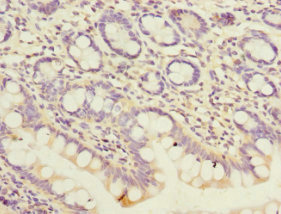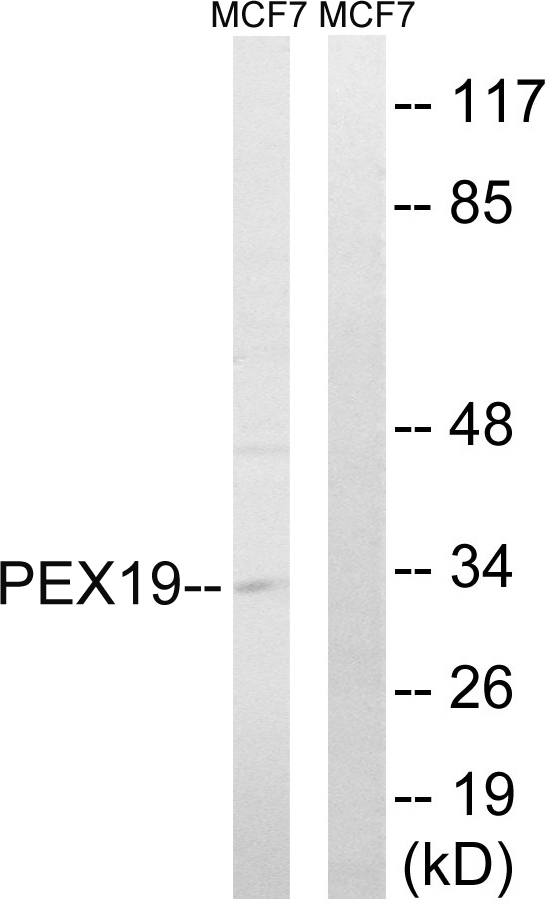
WB analysis of various sample lysates using GTX32780 PEX19 antibody. Dilution : 1:1000 Loading : 25microg per lane
PEX19 antibody
GTX32780
ApplicationsWestern Blot, ImmunoHistoChemistry, ImmunoHistoChemistry Paraffin
Product group Antibodies
TargetPEX19
Overview
- SupplierGeneTex
- Product NamePEX19 antibody
- Delivery Days Customer9
- Application Supplier NoteWB: 1:500 - 1:2000. IHC-P: 1:50 - 1:200. *Optimal dilutions/concentrations should be determined by the researcher.Not tested in other applications.
- ApplicationsWestern Blot, ImmunoHistoChemistry, ImmunoHistoChemistry Paraffin
- CertificationResearch Use Only
- ClonalityPolyclonal
- ConjugateUnconjugated
- Gene ID5824
- Target namePEX19
- Target descriptionperoxisomal biogenesis factor 19
- Target synonymsD1S2223E, HK33, PBD12A, PMP1, PMPI, PXF, PXMP1, peroxisomal biogenesis factor 19, 33 kDa housekeeping protein, housekeeping gene, 33kD, peroxin-19, peroxisomal farnesylated protein
- HostRabbit
- IsotypeIgG
- Protein IDP40855
- Protein NamePeroxisomal biogenesis factor 19
- Scientific DescriptionThis gene is necessary for early peroxisomal biogenesis. It acts both as a cytosolic chaperone and as an import receptor for peroxisomal membrane proteins (PMPs). Peroxins (PEXs) are proteins that are essential for the assembly of functional peroxisomes. The peroxisome biogenesis disorders (PBDs) are a group of genetically heterogeneous autosomal recessive, lethal diseases characterized by multiple defects in peroxisome function. These disorders have at least 14 complementation groups, with more than one phenotype being observed for some complementation groups. Although the clinical features of PBD patients vary, cells from all PBD patients exhibit a defect in the import of one or more classes of peroxisomal matrix proteins into the organelle. Defects in this gene are a cause of Zellweger syndrome (ZWS), as well as peroxisome biogenesis disorder complementation group 14 (PBD-CG14), which is also known as PBD-CGJ. Alternative splicing results in multiple transcript variants. [provided by RefSeq, Aug 2010]
- Storage Instruction-20°C or -80°C,2°C to 8°C
- UNSPSC12352203





